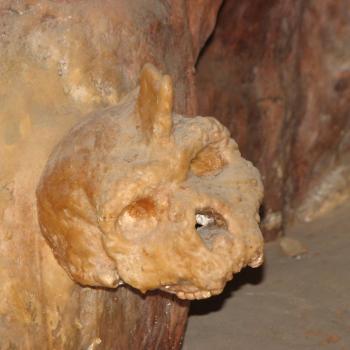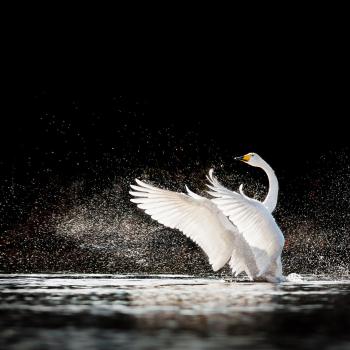One of the most incredible stories of the 21st century hasn’t showed up yet on the radar of popular culture, thanks in part to the sterile language of scholarship and the lack of cross-disciplinary thinking in academia.
In a nutshell, archaeologists and geneticists are now busy proving that one of the most fantastic myths of the last 2,500 years is largely true. The setting for this incredible story is 60 miles north of the Arctic Circle in the far reaches of northeastern Siberia.
Ever since the ancient Greeks wrote about an island near the north pole known as Hyperborea, scholars, mystics and authors of every stripe have described it as the home of the gods and the cradle of humanity. The modern version of the myth is reflected in the crystalline Fortress of Solitude located somewhere in the Arctic, where the comic hero Superman learned about his god-like origins.
Key to this persistent myth is that Hyperborea developed a sophisticated culture when it was cut off from the rest of the world by glaciers, and when the ice receded they migrated south and laid the foundations for Indo-European culture.
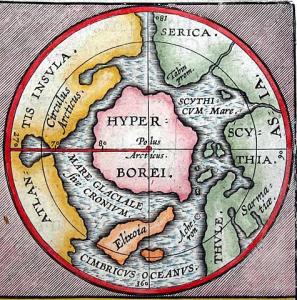
The science of myth
In 2001, archaeologists discovered evidence of a small but highly sophisticated group of people living along the Yana River in northeastern Siberia 32,000 years ago, not far from the East Siberian Sea. Scholars named it the Yana Culture and in 2019, the results of a genetic study were astonishing: The descendants of the Yana were the source of between 5 and 40 percent of the genome in more than half the world’s current population. It looks like the ancient Greeks were on to something that our most sophisticated scientific tools have only recently discovered.
Today Siberia is a vast and freezing wasteland, but 32,000 years ago it was the only region in the northern hemisphere that wasn’t covered with an ice sheet – only the mountains were ice-capped.
Evidence suggests it was a virtual paradise, filled with vegetation, an amazing array of mammals and an extremely wide diversity of bird life. The Yana River drainage was and remains today one of the biggest seasonal grounds for migratory birds in the world, with routes from three different global flyways converging in the area – a rare occurrence.
Evidence of a sophisticated class of Yana artisans includes hunting weapons made from rhinoceros horns, abstract animal figurines crafted from reindeer antlers and ornamental ivory vessels. Around stone hearths it appears the Yana ate with ivory utensils and wore ivory hairbands. In the 2019 genetic study published in Nature, an international team of scientists concluded the Yana were a “significant part of human history.”
Although the Yana Culture vanished from northeastern Siberia as the Glacial Maximum dropped temperatures even lower, they didn’t disappear. Geneticists believe the Yana were the ancestors of the Mal’ta-Buret culture in eastern Siberia about 21,000 years ago as well as the pre-Neolithic Jomon of Japan and the fabled Yamnaya of the Eurasian Steppe. The study found that Native Americans share up to 38 percent of their DNA with the Mal’ta Buret.
Scholars believe the Yana were highly mobile, based on the finding that amber was imported from afar to make pendants, suggesting an extensive trade network. While the Yana population is estimated at only 500 people, geneticists have found little to no signs of interbreeding.
The recent scientific focus on the Yana Culture is revealing there was more than a little truth to what had been considered for centuries to be nothing but myth and legend.

From Apollo to the Hindu sages
The ancient Greeks wrote of the sun god Apollo traveling to Hyperborea each year in a chariot. It was described as a sacred and spiritual place where the sun god conducted singers and musicians harmoniously with whooper swans, according to the 1st century Greek historian Diodorus Siculus.
Some believe Catherine the Great was convinced the Hyperboreans invented an elixir of immortality and ordered a secret expedition to the Arctic in 1765 to find it. The 19th century Russian mystic and author Helene Blavatsky claimed Hyperborea was originally inhabited by spirits who evolved into flesh and blood humans and established the city of Atlantis.
In 1885, the first president of Boston University William F. Warren wrote Paradise Found or the Cradle of the Human Race at the North Pole, which placed Atlantis, the Garden of Eden and the Hindu Mt. Meru near the North Pole, along with Avalon of Arthurian legend.
The Hindu sages who authored the Vedas described an ancient city of gods in the far north where the sun rises and sets just once a year, as described in The Arctic Home in the Vedas published in 1902 by the naturalist Bal Ganghadar Tilak, who cited Warren’s book.
The idea that a sophisticated culture developed because it was cut off by glaciers and isolated for millennia has been cited by numerous authors. In a 1963 issue of the journal Systematics, British scholar John G. Bennett wrote that Hyperborea developed behind a wall of glaciers until they receded about 15,000 years ago and made it possible for the sophisticated culture to migrate south and lay the foundations of ancient cultures.
A summary of mythic beliefs about a legendary island near the north pole is contained in Beyond the North Wind: The Fall and Rise of the Mystic North (Weiser Books, 2019) by Christopher McIntosh. The book also describes a Russian archaeological expedition in 1997 and ’98 that revealed 10 stone labyrinths arranged in spirals and stone pyramids believed to be more than 12,000 years old.
Sergeo Kolubev of the Russian Geographical Society claimed that labyrinths found in the Karelia Republic near the border of Finland and on the Solovetsky Islands of the White Sea marked “ … the oldest sacred center of humankind, no less amazing and probably older than the famous Stonehenge.”
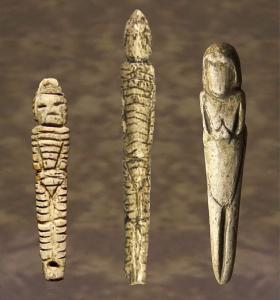
A northern paradise
The Yana culture enjoyed an ecosystem bountiful enough to support hares, foxes, reindeer, brown bears, bison, horses, wolves, wolverines, rhinoceros, musk ox, lions and woolly mammoths measuring up to 11 feet at the shoulder and weighing up to 18,000 pounds.
There’s direct evidence that the Yana hunted hares, reindeer, bison, brown bear and woolly mammoths. Archaeologists believe they targeted adolescent and young adult female mammoths because their tusks could be more easily used to make hunting weapons. Corroborating evidence for selective hunting was found in a collection of more than 1,000 bones from 26 mammoths, with the bones arranged by the age and sex of the animals.
The Yana were a creative culture that used reindeer antlers to make figurines that archaeologists believe were intended to represent mammoths. Other artisan-work included more than 1,500 beads, three ornamented ivory vessels and two engraved mammoth tusks that may represent hunters or possibly dancers. Some of the beads were stained with red ocher, which is the oldest and most commonly used pigment in human history.
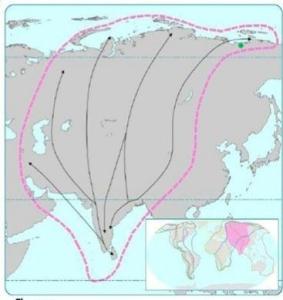

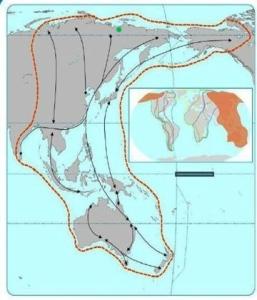
It’s plausible the Yana were drawn to the area by the unusually large summer breeding ground for migratory birds. Ornithologists believe current bird flyways have remained unchanged since long before humans spread around the planet, which means modern bird migration maps can provide a unique window on the deep past.
Today at least 1,200 bird species are found on the trio of global bird flyways that converge in the Yana River drainage (there are a total of eight global flyways). Three or more flyways converging is a phenomenon found in only five regions on the planet – 1) from the Eurasian Steppe north to the Arctic Sea, 2) most of Alaska, 3) parts of Central America, 4) Patagonia and 4) a north-south corridor from Central Africa to South Africa.
Among the oldest human remains ever discovered in northern Russia were estimated to be 45,000 years old, found at Ust-Ischim, which is also located at the intersection of three migratory bird routes on three different global flyways.
(Ben H. Gagnon is an award-winning journalist and author of Church of Birds: an eco-history of myth and religion, released April 2023 by Moon Books and John Hunt Publishing. Order here or at other booksellers. More information can be found at this website, which links to a pair of YouTube videos written by the author and produced by JHP.)







